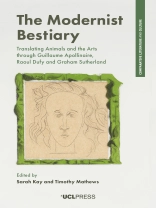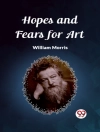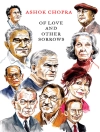The Modernist Bestiary centres on Le Bestiaire ou Cortège d’Orphée (1911), a multimedia collaborative work by French-Polish poet Guillaume Apollinaire and French artist Raoul Dufy, and its homonym, The Bestiary or Procession of Orpheus (1979), by British artist Graham Sutherland. Rather than reconstructing the lineage of these two compositions, the book uncovers the aesthetic and intellectual processes involved that operate in different times, places and media. The Apollinaire and Dufy Bestiary is an open-ended collaboration, a feature that Sutherland develops in his re-visiting, and this book shows how these neglected works are caught up in many-faceted networks of traditions and genres. These include Orphic poetry from the past, contemporary musical settings, and bestiary writing from its origins to the present. The nature of productive dialogue between thought and art, and the refracted light they throw on each other are explored in each of the pieces in the book, and the aesthetic experience emerges as generative rather than reductive or complacent.
The contributors’ encounters with these works take the form of poetry and essays, all moving freely between different disciplines and practices, humanistic and posthumanist critical dimensions, as well as different animals and art forms. They draw on disciplines ranging from music, art history, translation, Classical poetry and French poetry, and are nurtured by approaches including phenomenology, cultural studies, sound studies, and critical animal studies. Collectively the book shows that the aesthetic encounter, by nature affective, is by nature also interdisciplinary and motivating, and that it spurs the critical in addressing the complex issues of ‘humananimality’.
Praise for The Modernist Bestiary
‘[A] beautifully composed, colour-illustrated volume … Every Apollinarian, and every intermedial modernist, will thrill to this superb set of essays in its illumination of cultural co-production as a resonant subject and as a mode of critical enquiry.’
French Studies
‘Enacting in multiple compelling ways the mobility and relationality at the heart of its concerns, this collection makes a major contribution to the various fields into which it intervenes, including modernist studies, translation studies, critical animal studies, and research into intermedial transmission, especially between text and image and text and music.’ – Martin Crowley, University of Cambridge
Cuprins
Headpiece: Oblique and prolonged
Timothy Mathews
1. Graham Sutherland The Bestiary or Procession of Orpheus: An introduction
Dawn Ades
2. The Voice of Light: Nature and revelation in The Bestiary, or Procession of Orpheus
Sarah Kay
3. Ombre terreuse: Shades of meaning in Vergil, Ovid and Apollinaire
Sarah Spence
4.Apollinaire’s Octosyllabic Quatrain, Translation and Zoopoetics
Clive Scott
5. Animals on Parade: Collecting sounds for l’histoire naturelle of modern music
Rachel Mundy
6. Beasts of Flesh and Steel: The post-industrial bestiaries of Apollinaire, Dufy and Sutherland
Matthew Senior
7. How is Orpheus honoured? Procession, association and loss
Timothy Mathews
Notes Towards A Hybrid Bestiary: Out of Apollinaire, Sutherland and others
George Szirtes
Tailpiece
Sarah Kay
Index
Despre autor
Timothy Mathews is Emeritus Professor of French and Comparative Criticism, UCL. In his writing and translating he explores what relating to art can tell us about relating to people. His interests include relations of literary and visual art, translation and creative critical writing. He has written on many modern artists and writers, notably Apollinaire. His most recent monograph is Alberto Giacometti: the Art of Relation (2013). He is currently completing a book of creative critical ‘chronicles’, and preparing translations of Guillaume Apollinaire and Roland Barthes. He is a member of the Academy of Europe and Officier dans l’Ordre des Palmes Académiques.












